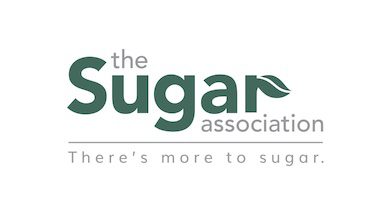

Attribute to The Sugar Association:
The release of the AHA’s Scientific Statement on added sugars and kids is baffling. In a year where both the 2015 Dietary Guidelines for Americans (ages 2 years and up) and the Food and Drug Administration’s (FDA) final labeling rule (ages 4 years and up) issued a 10% target for added sugars in an effort to provide Americans a tool to help build a healthy diet, the AHA is releasing their own vastly different recommendations.
The AHA is recommending 6 teaspoons of added sugars for an active 16-18-year-old boy – this is just 3% of his calories. Where is the science to support this? The conversation around added sugars has gotten out of control and the beliefs of individuals are trumping what the scientific evidence actually shows. Case in point—the AHA even states that “group consensus” was used to develop these recommendations.
We all want kids in the U.S. and around the world to be healthy—that is a given. But the added sugars dialogue has lost its scientific integrity. AHA’s hyper-focus on added sugars contradicts the advice of the American Academy of Pediatrics (AAP), which historically has been the expert voice on children’s diets.
The AAP recommends that, “A positive emphasis on nutritional value, variety, appropriate portion, and encouragement for a steady improvement in quality will be a more effective approach for improving nutrition and health than simply advocating for the elimination of added sugars.” The AAP also recognizes that, “Consumed within recommended calorie amounts, sweetness can offer an effective tool to promote consumption of nutrient-dense foods and beverages.”1
The authors themselves acknowledge that these recommendations are not based on high quality data stating, “…important gaps exist in the knowledge of sugars in children. Longitudinal studies, intervention studies, and randomized, controlled trials are urgently needed to provide high-quality data for policy decisions.”
Of note, almost all of the studies on added sugars intake in kids were studies on soda consumption, and these findings cannot and should not be extrapolated to indicate the effects of all added sugars in the diet. It is one thing to say that evidence supports an association between soft drinks and obesity and disease risk in children, but to say that evidence exists to support a 100 calorie limit of added sugars in 2-18 year olds is simply not factual.
When consumed appropriately, added sugars and a nutrient-rich diet are not mutually exclusive. Added sugars are actually a critical part of the nutrient delivery vehicle and essential in masking the bitterness of fiber and whole grains, allowing bread to rise, and offsetting sour in dairy among other functional and palate-friendly uses. Added sugars can help kids in particular, but also adults, consume nutrient-rich diets.
Unfortunately, this continuing focus on a single nutrient is a dangerous one, and one that certainly backfired with the rising obesity rates during the anti-fat era of the 1990s.
Important evidence in conflict with AHA’s guidance includes the following:
— Updated: 8/24/16
1. Snacks, Sweetened Beverages, Added Sugars, and Schools, Council on School Health, Committee on Nutrition, Pediatrics Volume 135, number 3, March 2015
2. FDA, Food Labeling: Revision of the Nutrition and Supplement Facts Labels Final Rule, May 27, 2016
3. United Kingdom Scientific Advisory Committee on Nutrition (SACN) report, Carbohydrates and Health, July 17, 2015
4. Evert AB, Boucher JL, Cypress M, et al. Nutrition therapy recommendations for the management of adults with diabetes. Diabetes Care. 2014;37 Suppl 1:S120-143.

January 14, 2025
January 14, 2025 (Washington, D.C.) – The following reaction statement is attributable to Sugar Association President and CEO Courtney Gaine, PhD, RD: “The Sugar Association supports transparency, but this draft label offers only the illusion of transparency – it entirely leaves out total calories and the use of industrial additives like artificial sweeteners. In fact, […]

December 19, 2024
December 19, 2024 (Washington, D.C.) – The following reaction statement is attributable to Sugar Association President and CEO Courtney Gaine, PhD, RD: “The Sugar Association supports the Dietary Guidelines recommendation to limit added sugars to 10% of total calories, but the new “healthy” definition goes well beyond that recommendation and arbitrarily excludes many foods containing […]

December 10, 2024
December 10, 2024 (Washington, D.C.) – Americans feel more confident about managing their sugar intake when they know the Dietary Guidelines recommendation to limit added sugars to less than 10% of their total calories, and the Sugar Association welcomes the Dietary Guidelines Advisory Committee (DGAC) reaffirmation of that guideline. The added sugars guideline is a […]
© 2025 The Sugar Association, Inc. All rights reserved.
Get Social with #MoreToSugar